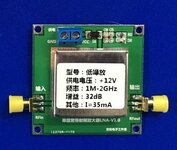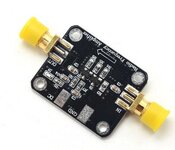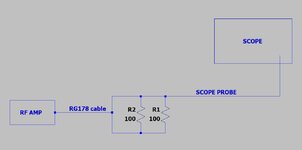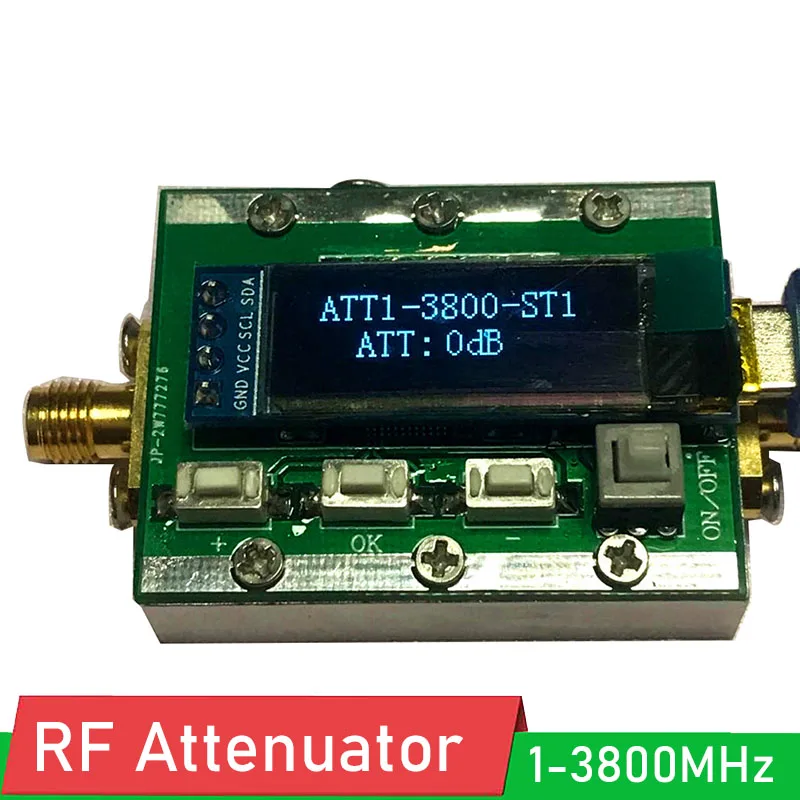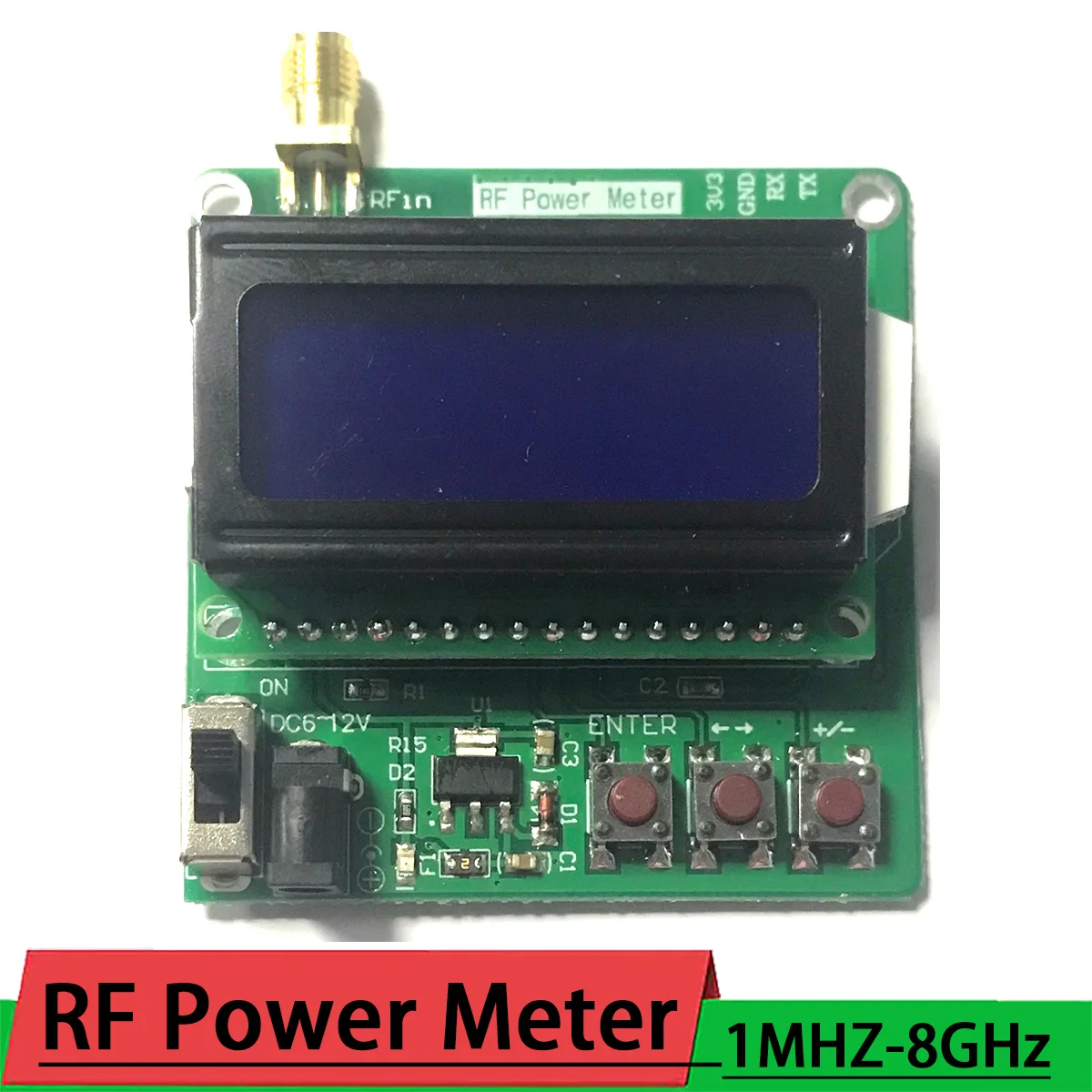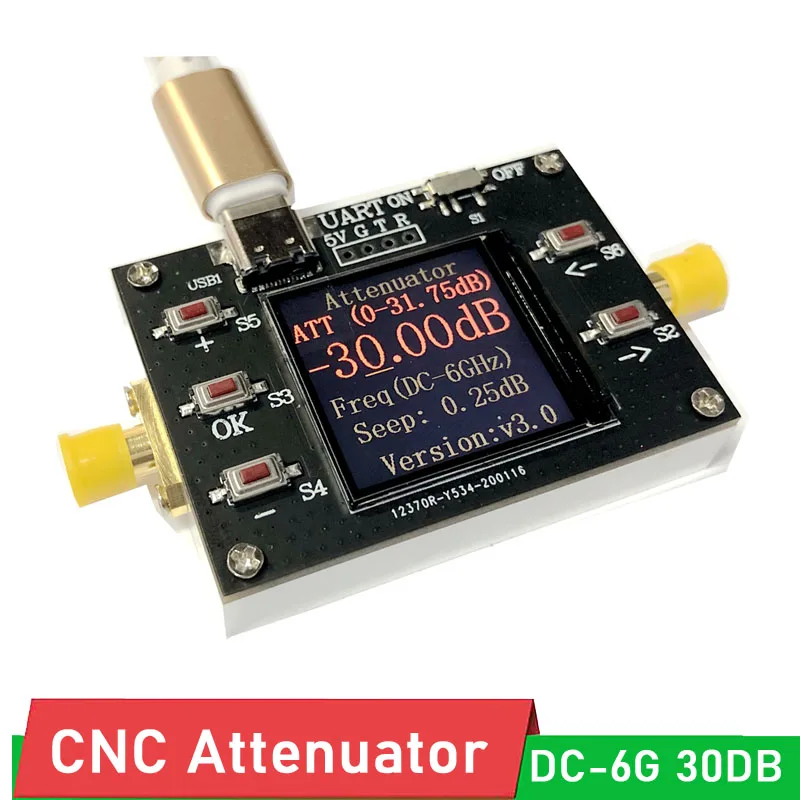Paul98
Member level 5
Hi!,
these days i am testing some RF amplifiers with a signal generator and one of these is the one in the picture but i have a problem. When I connect the output of this amp to the oscilloscope I see the sine wave correctly amplified and not distorted. Now this amplifier should have been made to work with 50Ohm loads. So I unplugged the oscilloscope from the amp output and connected a 50ohm dummy load. I did this to see how the amplifier behaved under load and the dummy load so I connected the oscilloscope probe and I saw something that has nothing to do with the output I had seen before on the oscilloscope. Completely distorted it is unusable . Same problem with a smaller black amplifier. If connected directly to the oscilloscope I see a perfect sine wave but if I connect the load it is a disaster. Where am I doing wrong?
these days i am testing some RF amplifiers with a signal generator and one of these is the one in the picture but i have a problem. When I connect the output of this amp to the oscilloscope I see the sine wave correctly amplified and not distorted. Now this amplifier should have been made to work with 50Ohm loads. So I unplugged the oscilloscope from the amp output and connected a 50ohm dummy load. I did this to see how the amplifier behaved under load and the dummy load so I connected the oscilloscope probe and I saw something that has nothing to do with the output I had seen before on the oscilloscope. Completely distorted it is unusable . Same problem with a smaller black amplifier. If connected directly to the oscilloscope I see a perfect sine wave but if I connect the load it is a disaster. Where am I doing wrong?
